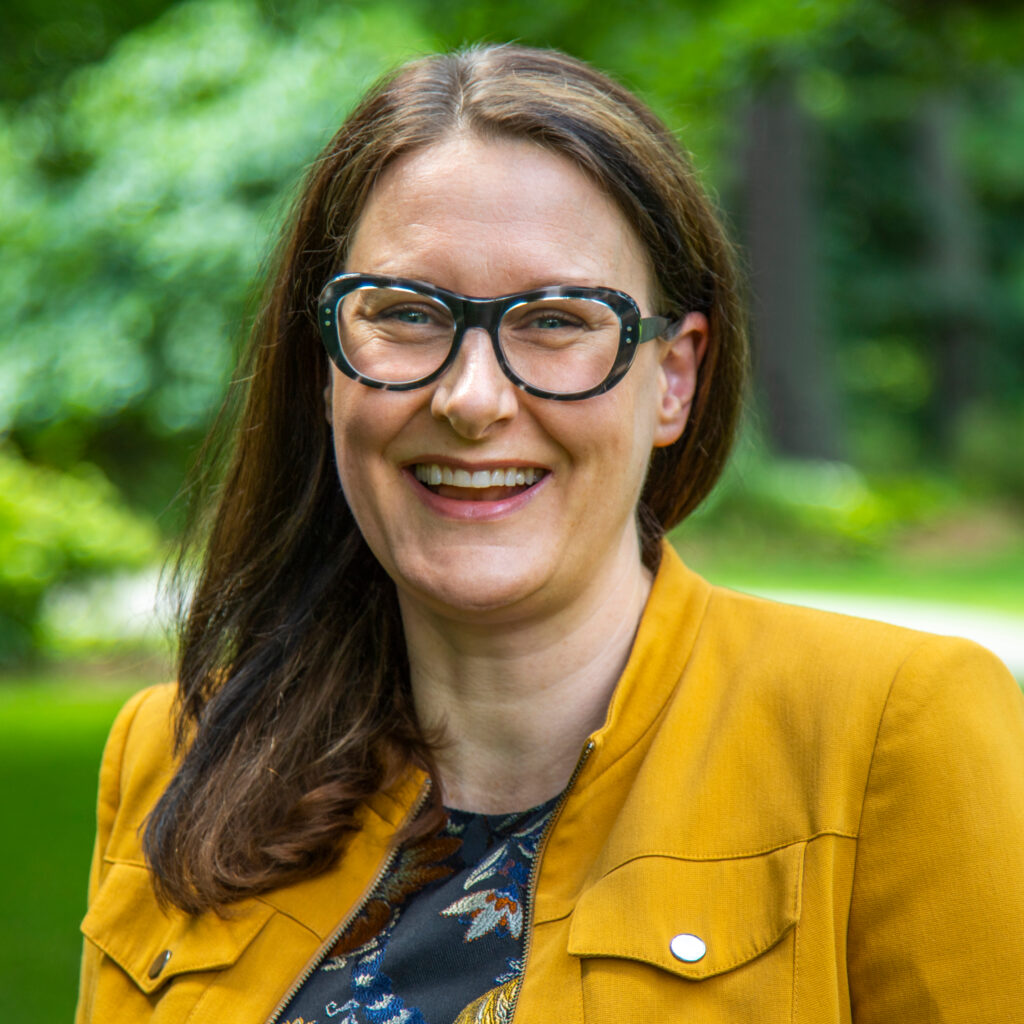You mentor many grad students in your lab. How have mentors helped you in your career?
How do you imagine out your future? I think we all look around us and look for the people we admire and whose values seem consistent with our own.
Growing up, very few adult women around me had careers, and I often saw those who did struggling. Female politicians, who were the public faces of what leadership looked like for women at that time, were not being treated very well. So I looked to my aunt Mary Ann Fieldes who was a professor of genetics at Wilfrid Laurier University and a real trailblazer when she did her PhD in epigenetics at McGill. She had to fight hard, but she succeeded. And I spent a lot of my career learning from her.
She passed away about a decade ago, but even before then, there have been other women who I have just felt so lucky to see in front of me. They represented the possibility of change – of doing things differently.
What would you say to alumni who are considering mentoring students?
I think it is very easy to forget what it was like when you were 22, and the whole world, all its possibilities are right in front of you. You might have thought you were going to be a lawyer or a doctor. (I was going to be an actor and a novelist!) And you realize that’s not what you want after all. It’s so important to remember that what helps a person at that point is talking to someone who went through it.
There’s also an extraordinary joy in remembering the path that we took and what it was like when everything was a possibility. Because as you move through life, the possibilities narrow. There’s something kind of beautiful in a mentoring relationship about the balance between that hopefulness and openness that sometimes gets harder to hold onto as you go through your own life.
So I’d say to alumni, come join us! And to alumni who are doing it, I’d say thank you. What you’re doing is so important for those young people.
You’re the first woman to hold the role of Principal at UTM, you were an early member of Toronto’s Initiative for Diversity & Excellence, and you’re deeply committed to promoting inclusive excellence in your teaching, research and leadership. Why is this so important to you?
When you see a profession or institution that’s homogenous, where one gender or ethnicity or social class monopolizes, it’s weaker, because it’s missing raw human talent. That’s not what I see in our student body. Our students come from such diverse backgrounds, they bring such different identities and life experiences and come because they deserve to, and they believe they will thrive here. We have to make sure they do. That means working to reflect their diversity and their excellence back to them.
It also means doubling down on student scholarships and awards. Other universities just cannot provide accessibility to the extent that U of T and UTM do. It’s a source of enormous pride to me that I know personally a number of students from all around the globe, including from here in Mississauga, Peel and other parts of the GTA, whose lives and those of their families have been completely transformed by the opportunity U of T has given them. It moves me every time.
UTM recently received gold from the Sustainability Tracking, Assessment & Rating System (STARS), a rating system for colleges and universities that addresses the environmental, social and economic dimensions of sustainability. What’s next for UTM’s sustainability efforts?
That’s a restless urgency for us at all times. Some of what we’re going to be doing is about making sure we are carbon zero in the early 2040s and climate positive by 2050. That means implementing our Project Shift, which is about changing the way that energy is both produced and used on the campus, a significant investment our counterparts at St. George and U of T Scarborough are also making in different ways. And we’re proud to have contributed to U of T’s recent ranking as the most sustainable university in the world for the second year in a row!
UTM has had a sustainability plan since 2020, and the gold rating is a tribute to the extraordinary work that went into that planning and also to its execution by incredibly skilled professionals. Everything we do is aiming at achieving those goals, even as we’re doing all the other things we must do as a campus. It’s a first principle: you’ve got to take care of the world that we’re a part of and make sure that we can continue to sustain what it is that is important to us moving forward.
Last September, UTM officially opened its New Science Building, which is comprised entirely of leading-edge wet lab space. What impact will this new facility have on UTM’s research program and the life sciences sector in Canada?
The building enables us to bring together the most innovative, exciting research, particularly in the life sciences, broadly conceived, from medical or pharmaceutical innovations or drug discovery to basic science, like foundational research on how the universe is structured. It’s also a new home for our Centre for Medicinal Chemistry, which strives to develop much-needed drugs for neglected diseases and some forms of cancer much faster than the traditional approach.
But we are also bringing that kind of research into an entrepreneurial space. That both happens with the spinoff companies that our faculty have created, but also with entrepreneurs, many of whom are students from within U of T or researchers in SpinUp, our wet lab accelerator on the ground floor of the building. We are providing space to very early-stage, pre-seed funding companies, so they can do the work that gets them the funding they need to grow. And there is not enough of that space in Canada.
There is not enough of the kind of cutting-edge wet lab space for that foundational and basic research either, so we have opened a space that will not only transform UTM and the student and faculty experience here, but also the region and the country.
It’s very important, given how much Canadian innovation ends up leaving this country and being developed elsewhere, not bringing the direct benefits to Canadians, whether that’s in terms of economic growth or the delivery of the solutions we are finding. This is one of the ways we’re trying to bridge that gap.


